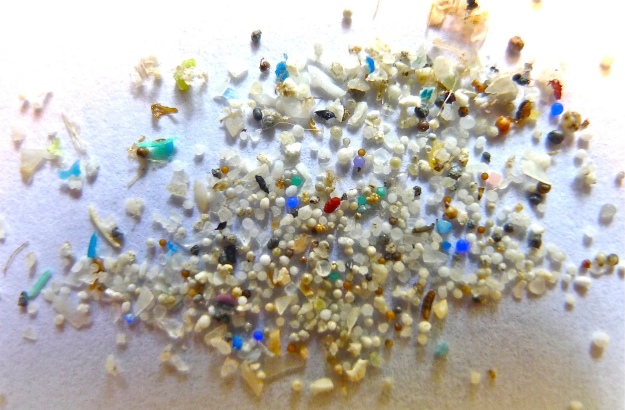A guest post by Mai Lei
The following post is one of a series previewing the research that will be presented at the in Sacramento, California (4–8 November 2018).
Can you imagine our beautiful planet becoming a “plastic planet”? In the BBC documentary film Blue Planet II, members of the producing team noted that plastic waste is ubiquitously floating in the sea, including fishing lines, plastic packages, and plastic bottles. Marine organisms can be trapped by plastic waste that is everywhere in the oceans, even in the deepest and most remote parts. So it is essential to carry out intensive studies of plastic waste. Large plastics can either be physically or chemically broken into fragments after having been in the water a long time, traveling long distances. Such fragments, coupled with ones that were released into seas as fine plastic particles (smaller than 5 mm), are collectively called microplastics.

Surface water trawling for floating microplastic collection on the Pearl River estuary in China. Inset pictures are pieces of microplastic (fragments, pellets, and lines) from the trawl. Credit: Lei Mai.

 Plastics are an indispensable component of our daily lives due to their wide applications. As a consequence of improper handling or disposal, plastics may become dispersed in terrestrial and aquatic (water and sediment) systems, with rivers potentially transporting microplastics (MPs) to marine systems. The accumulation of plastics in these systems constitutes an emerging scientific and societal issue due to their ubiquity, high persistence and potential to cause ecological effects.
Plastics are an indispensable component of our daily lives due to their wide applications. As a consequence of improper handling or disposal, plastics may become dispersed in terrestrial and aquatic (water and sediment) systems, with rivers potentially transporting microplastics (MPs) to marine systems. The accumulation of plastics in these systems constitutes an emerging scientific and societal issue due to their ubiquity, high persistence and potential to cause ecological effects.